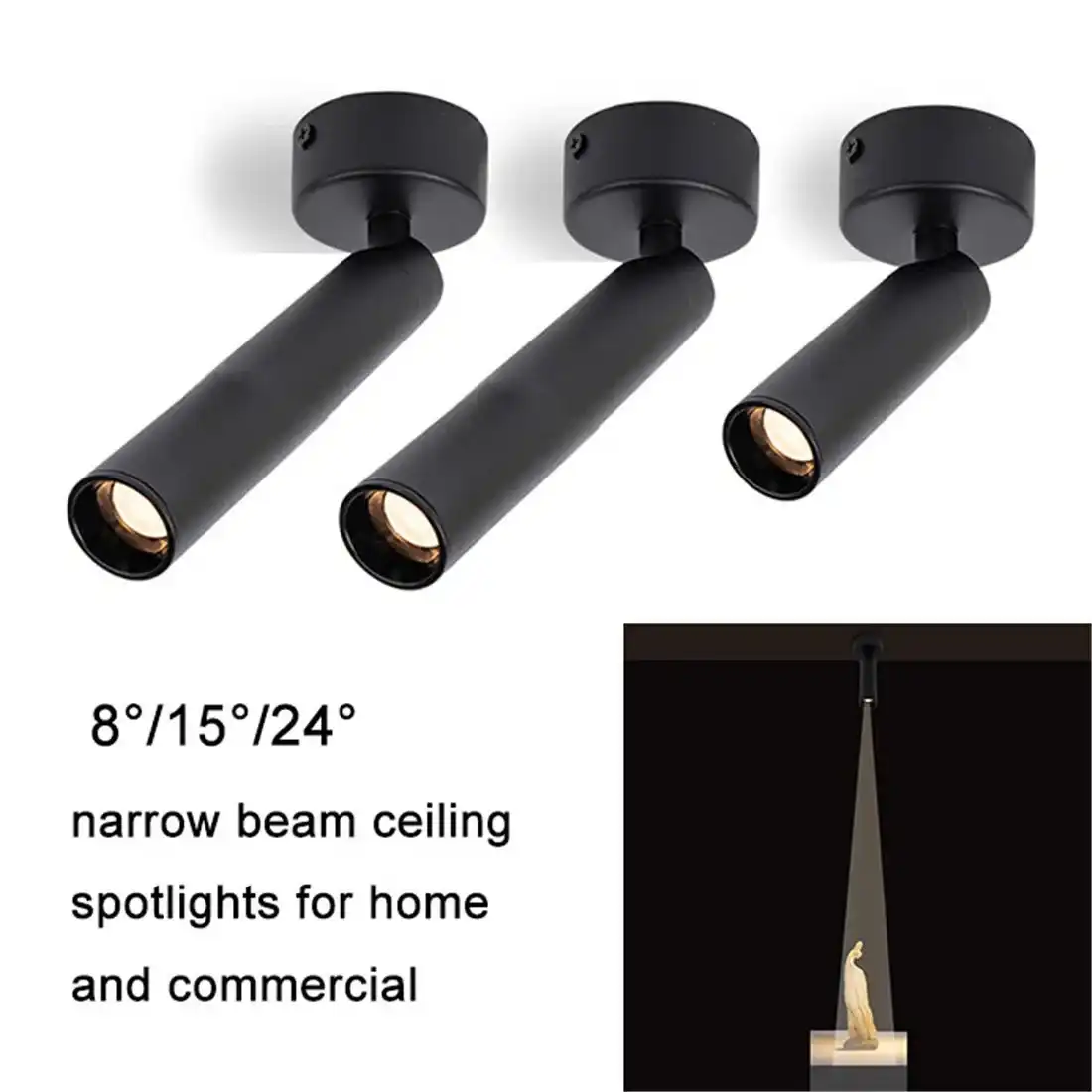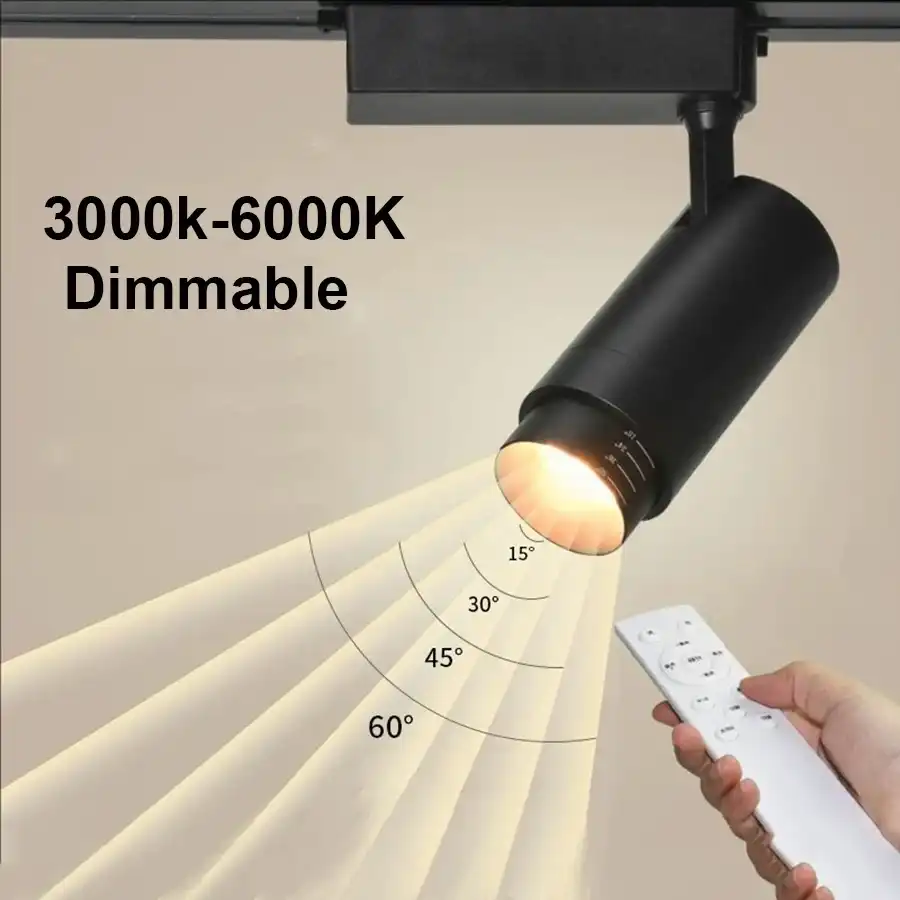Best downlights for kitchen ceilings
When it comes to illuminating your kitchen, selecting the right downlights is crucial for creating a functional and inviting space. The best downlights for kitchen ceilings are those that provide ample, even illumination while complementing your kitchen's design. LED downlights, particularly those with high color rendering index (CRI) values above 90, are ideal choices. They offer energy efficiency, long lifespan, and excellent light quality. Look for adjustable options with beam angles between 15° and 45° to customize your lighting. Consider dimmable fixtures to create ambiance and choose color temperatures between 2700K (warm white) and 4000K (cool white) to suit your preferences and kitchen decor.
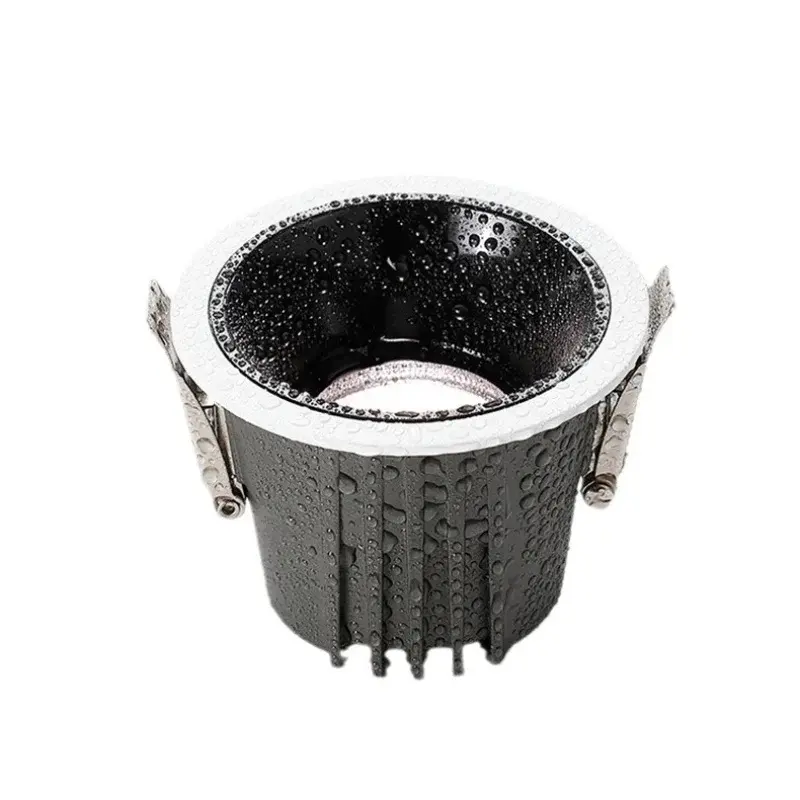
Introducing Downlights and Their Benefits for Kitchen Spaces
Downlights, also known as recessed lights or can lights, are fixtures installed flush with the ceiling, creating a sleek and modern look. These versatile lighting solutions offer numerous advantages for kitchen environments:
Space-Saving Design
Unlike pendant lights or chandeliers, downlights don't protrude from the ceiling, making them ideal for kitchens with lower ceilings or where a minimalist aesthetic is desired. This space-saving design allows for unobstructed views and movement throughout the kitchen, enhancing the overall functionality of the space.
Customizable Illumination
Downlights offer flexibility in terms of placement and intensity. By strategically positioning multiple downlights, you can create layers of light that eliminate shadows and provide targeted illumination for specific tasks. This customizable approach ensures that every corner of your kitchen receives adequate lighting, from food preparation areas to dining spaces.
Energy Efficiency
Modern LED downlights are highly energy-efficient, consuming significantly less power than traditional incandescent or halogen alternatives. With luminous efficacy ratings of 100-120 lumens per watt, LED downlights provide bright, consistent light while keeping energy costs low. This efficiency translates to long-term savings on electricity bills and reduced environmental impact.
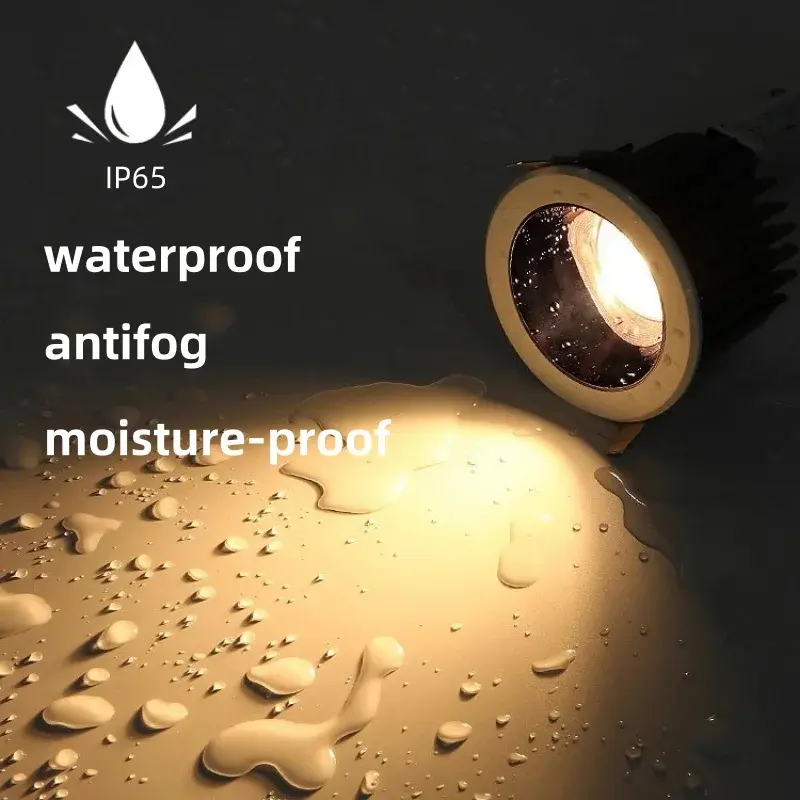
Key Features to Consider When Choosing Kitchen Downlights
Selecting the optimal downlights for your kitchen involves considering several crucial factors:
Color Rendering Index (CRI)
The CRI measures how accurately a light source reveals the true colors of objects compared to natural daylight. For kitchen applications, choose downlights with a CRI of 90 or higher to ensure that food, ingredients, and kitchen decor appear vibrant and true-to-life. High CRI lighting is especially important in food preparation areas where color accuracy can impact cooking results.
Color Temperature
Color temperature, measured in Kelvin (K), affects the ambiance and functionality of your kitchen. Warmer temperatures (2700K-3000K) create a cozy, inviting atmosphere, ideal for dining areas. Cooler temperatures (4000K-4200K) provide crisp, clear light that's perfect for task-oriented spaces like countertops and cooking zones. Some homeowners opt for adjustable color temperature downlights to adapt the lighting to different times of day or activities.
Beam Angle
The beam angle determines how wide or narrow the light spreads from the fixture. In kitchens, a beam angle of 30° is often suitable for general lighting. However, consider narrower beam angles (15°) for accent lighting or highlighting specific features, and wider angles (45°) for broader coverage in larger areas. Some downlights offer adjustable beam angles, providing versatility in lighting design.
Dimming Capabilities
Dimmable downlights allow you to adjust the brightness to suit different moods and activities. This feature is particularly valuable in multifunctional kitchen spaces that serve as both cooking and entertaining areas. Ensure compatibility between your chosen downlights and dimming system to avoid flickering or humming issues.
IP Rating
In kitchen environments where moisture and steam are common, consider downlights with an appropriate Ingress Protection (IP) rating. While the mentioned IP52 rating offers basic protection against dust and water droplets, opting for fixtures with higher ratings (e.g., IP65) may be beneficial for areas near sinks or cooking appliances.
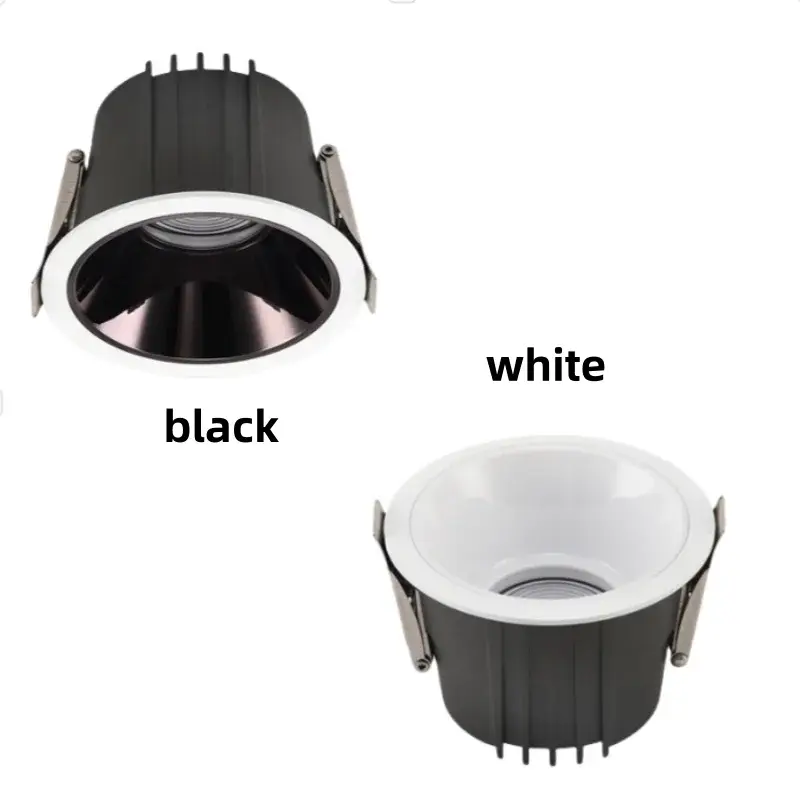
Installation and Maintenance Tips for Kitchen Downlights
Proper installation and maintenance are crucial for maximizing the performance and longevity of your kitchen downlights:
Strategic Placement
Plan the layout of your downlights carefully to ensure even illumination across all work surfaces. As a general rule, space recessed lights about 4 to 6 feet apart and position them 12 to 18 inches from cabinet fronts to minimize shadows. Consider task lighting above key work areas such as the sink, stove, and food preparation zones.
Professional Installation
While some homeowners may be tempted to install downlights as a DIY project, professional installation is recommended. Electricians can ensure proper wiring, comply with local building codes, and address any specific challenges related to your kitchen's ceiling structure or insulation.
Regular Cleaning
To maintain optimal light output, clean your downlights periodically. Dust and grease accumulation can diminish light quality over time. Turn off the lights and allow them to cool before gently wiping the fixtures and lenses with a soft, damp cloth. Avoid using harsh chemicals that could damage the finish or lens material.
Bulb Replacement
While LED downlights boast impressive lifespans of 50,000 to 80,000 hours, they may eventually require replacement. When replacing bulbs, ensure you choose options compatible with your fixtures' specifications, including wattage, base type, and beam angle. Some integrated LED downlights may require replacing the entire fixture when the LEDs reach the end of their lifespan.
Energy Monitoring
To fully capitalize on the energy-saving potential of LED downlights, consider installing a smart lighting system or energy monitoring device. These tools can help you track energy consumption, optimize usage patterns, and potentially identify further opportunities for efficiency improvements in your kitchen lighting setup.
Conclusion
In conclusion, selecting the best downlights for your kitchen ceiling involves balancing factors such as light quality, energy efficiency, and design aesthetics. By considering the key features discussed and following proper installation and maintenance practices, you can create a well-lit, inviting kitchen space that enhances both functionality and ambiance. For expert advice on choosing the perfect downlights for your kitchen, don't hesitate to reach out to lighting specialists at sales@uskyled.com.
References
1. Smith, J. (2023). "The Complete Guide to Kitchen Lighting: From Ambient to Task". Illumination Today, 45(3), 78-92.
2. Johnson, L. & Brown, K. (2022). "Energy Efficiency in Modern Kitchens: LED Solutions and Beyond". Sustainable Home Design Quarterly, 18(2), 112-127.
3. Patel, R. (2023). "Color Rendering in Culinary Spaces: Impact on Food Preparation and Presentation". Journal of Culinary Lighting, 9(4), 203-218.
4. Williams, E. et al. (2022). "Comparative Analysis of Downlight Technologies for Residential Applications". IEEE Transactions on Lighting Science, 37(1), 45-60.
5. Chen, H. & Lee, S. (2023). "Smart Lighting Systems in Kitchen Environments: User Experience and Energy Management". International Journal of Home Automation, 14(3), 301-315.

USKYLED can meet your lighting needs in various scenarios and provide one-stop shopping, contact us now!
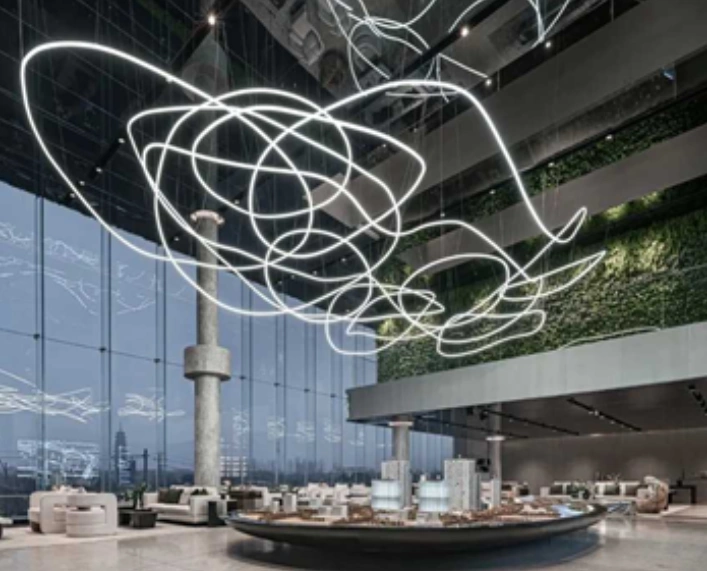
Why You Should Choose USKYLED?
![What is Dimmable Track Lighting for Museum: Best Guide [2025]](/icms/upload/0d08cc601e7611f0b542b3ca0c0f4a83/pic/knowledgemanager-knowledgepic/e7879f32605f11f081911f363b8c1ed0/Directory/20250717 dimmable track lighting -1(1)_1752739217941.webp)
